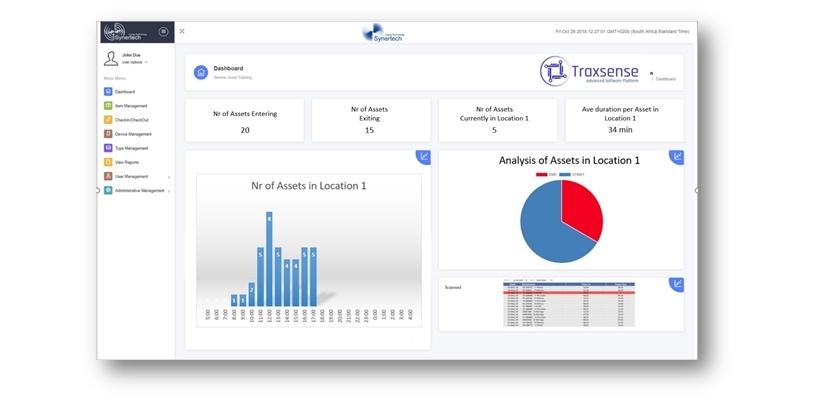Rapid advances in technology over recent years, combined with increased demands for efficiency and productivity, has given rise to the fourth industrial revolution, also known as Industry 4.0.
To drive the revolution in your own company, you need access to up-to-the-minute reports and dashboards, generated from accurate data collected autonomously.
Synertech has stepped up to the challenge to drive positive disruption in South Africa, and has developed a product that will be able to deliver on customer expectations across a multitude of industries, and provide scalability for any size organisation.
Solution overview
Synertech Traxsense is a locally developed and maintained software platform that meets the demands of enterprise-level end-users across all industries that are looking to ensure traceability of assets and products across the organisation.
Apart from the entry-level bar coding functionality, the modular software system is scalable to include a multitude of AIDC (automated identification and data capture) devices and IOT sensors, a major contributor to industrial IOT and the connectivity of everything.

Business benefits at a glance
1. Live monitoring via dashboards. The ability to track and authenticate where an asset is in near-real time, according to user-defined parameters, such as restrictions on its movements within a facility or between departments, etc.
2. Reporting. The generation of reports based on user-defined requirements. Virtually any report can be drawn up based on the type of information required. Reports can be delivered via e-mail and printed, or integrated into other applications.
3. Alerts and notifications. Traxsense has the ability to notify nominated individuals or key personnel when an asset is moved out of a designated area or location, or when other user-defined parameters are invoked. Alerts can be sent out via SMS, e-mail or both based on defined roles and responsibilities, escalation procedures and other critical business control rules.
4. System management. A management module that provides an easy-to-use interface for the management and administration of the system according to a wide range of user-defined parameters that also conform to auditing and risk management standards.
5. System integration. Integration into mainstream ERP systems in order to ensure asset management complies with accounting and auditing functions.
6. Integrated rules engine. Providing the client with the ability to define rules for receiving advance notifications of process-flow deviations.
Share